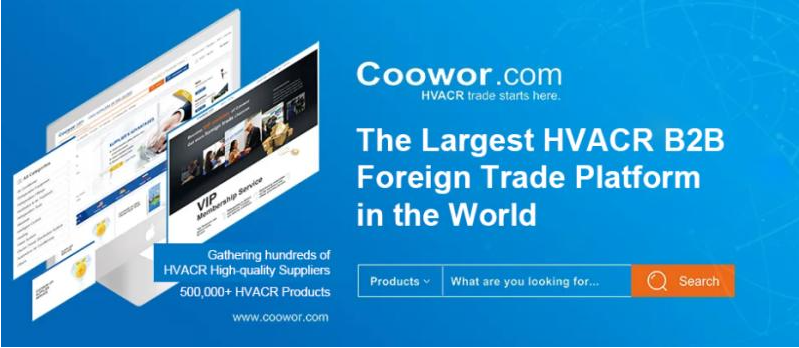
On October 23, "The 5th Summit of the Forum on China HVAC&R International Trade," jointly organized by the Zhejiang International Chamber of Commerce, the Zhejiang Provincial Association of Refrigeration, and the Zhejiang Refrigeration Air-Conditioning Industry Association, was successfully held at the Hangzhou Convention and Exhibition Center.

The forum brought together industry leaders including Max Jaramillo, President of the Refri Americas Exhibition; Waleed Ahmed, Business Development Manager of Al Imran Group; Sanjeev S. Gokhale, President of Industry Affairs at Indian Chemplast Sanmar Limited; Ferdian Lo, President of ASHRAE Indonesia Chapter; Engr. Md. Al-Emran Hossain, President of ASHRAE Bangladesh Chapter; Sushanta Kumar Pramanik, Chief Executive Officer of Bangladesh Cold Storage Association; Syed Fakkhi Iftikhar, Chapter Chairman of Pakistan HVACR Society; Mostofa Azad Chowdhury Babu, President of Bangladesh Cold Storage Association, alongside numerous enterprise representatives.
Under the theme "Know Yourself, Know Your Market, Set Sail Globally," the forum focused on international market demands and popular products, interpreting local policy trends and industrial layout directions. Industry experts also provided face-to-face answers to compliance issues and strategies for companies expanding overseas, helping them seize opportunities and break through trade barriers.
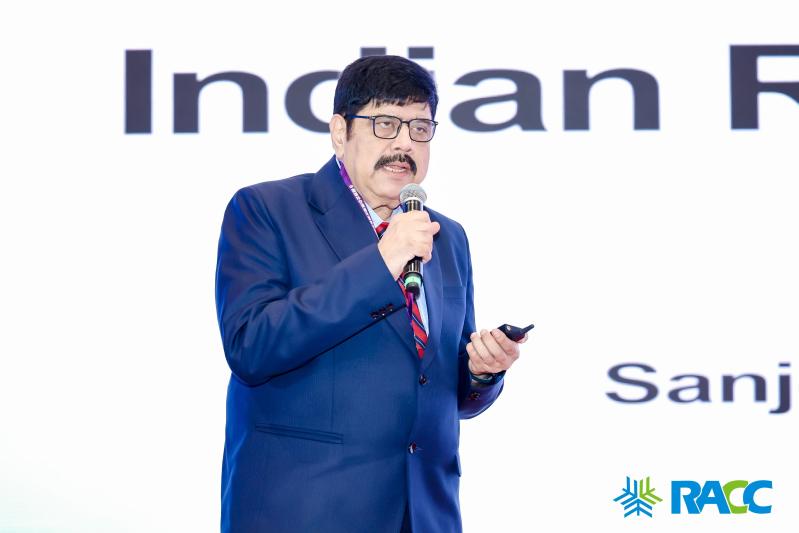
Sanjeev S. Gokhale, Indian Chemplast Sanmar Limited -President of Industry Affairs
Sanjeev S. Gokhale from India's renowned multinational Sanmar Group pointed out that India, as one of the world's fastest-growing large economies, has strong demand for air conditioning and refrigeration, and its refrigerant market is also experiencing robust growth. With the rapid development of industries such as construction, automotive, cold chain, and data centers, India's annual refrigerant demand growth rate is projected to reach 9%, with HFCs expected to dominate for the next seven years or more. Although HFCs will begin phasedown from 2032, domestic Indian companies are currently accelerating production capacity building to achieve self-sufficiency. Concurrently, next-generation low-GWP refrigerants like HFOs and hydrocarbons (e.g., R-290) are being gradually promoted, particularly suitable for emerging applications such as immersion cooling in data centers. Major Indian fluorochemical companies like SRF, Chemplast Sanmar, GFL, and Navin Fluorine are actively expanding production and investing in next-generation technologies to address future environmental regulations and technical challenges.
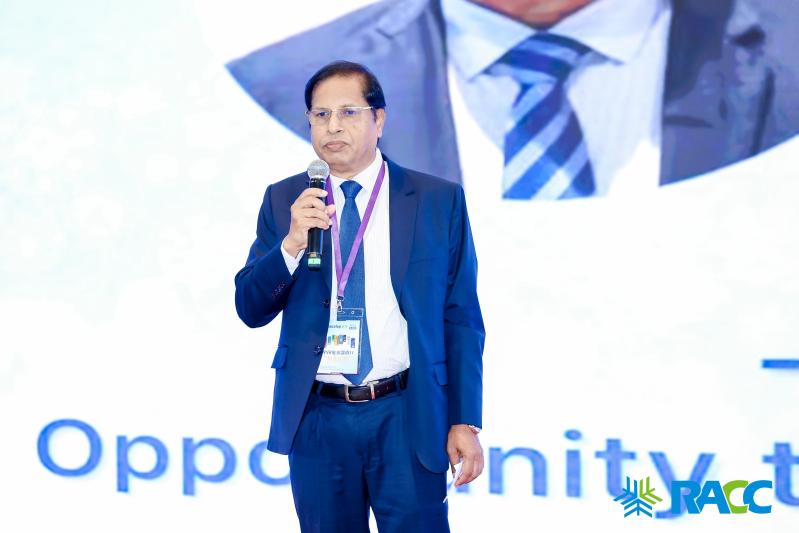
Sushanta Kumar Pramanik, Chief Executive Officer of Bangladesh Cold Storage Association
Sushanta Kumar Pramanik, CEO of the Bangladesh Cold Storage Association, highlighted that in Bangladesh, significant quantities of fruits and vegetables suffer severe losses during harvest season due to a lack of professional storage and transportation facilities. This leads to difficulties for the population in obtaining balanced nutrition and affects farmers' incomes. To address this issue, Bangladesh calls on international institutions, financial organizations, and Chinese partner companies to invest in building modern, multi-functional cold chain and storage facilities, while also improving transport conditions from warehouses to markets to ensure the quality and stable supply of perishable foods. Furthermore, promoting the development of cold chain and storage infrastructure will be a crucial step towards achieving sustainable agricultural development, reducing food waste, and ensuring food security in Bangladesh.
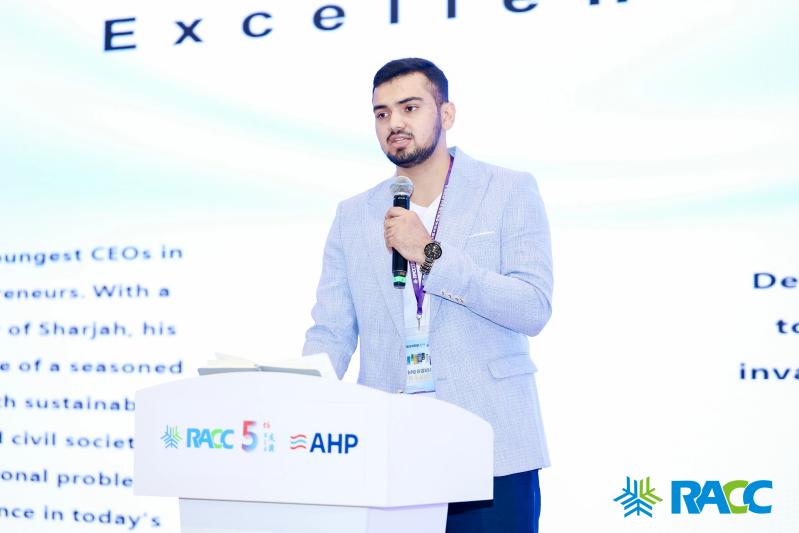
Waleed Ahmed, Al Imran Group of Companies-Business Development Manager
Waleed Ahmed, Business Development Manager of Al Imran Group, stated that after 30 years of development, Al Imran Group has established a robust supply chain system and a global partner network, consistently providing reliable HVAC solutions to the Middle East and international markets. He noted that with temperatures in the Middle East often exceeding 45°C, HVAC market demand remains strong, with the market size expected to grow from $3.114 billion in 2023 to $5.655 billion by 2030, at a CAGR of 6.2%. Additionally, mega-projects guided by Saudi Arabia's "Vision 2030" and initiatives like NEOM will further drive industry growth. This growth presents excellent opportunities for Chinese companies: now is a critical time to deepen cooperation, establish long-term partnerships, and expand presence in the evolving HVAC sector of the Gulf region. Currently, facing energy efficiency and environmental pressures, the market is accelerating its shift towards low-GWP refrigerants, inverter technology, and smart systems, making the Middle East Gulf region a vital market for global HVAC companies to expand cooperation and promote the adoption of green technologies.
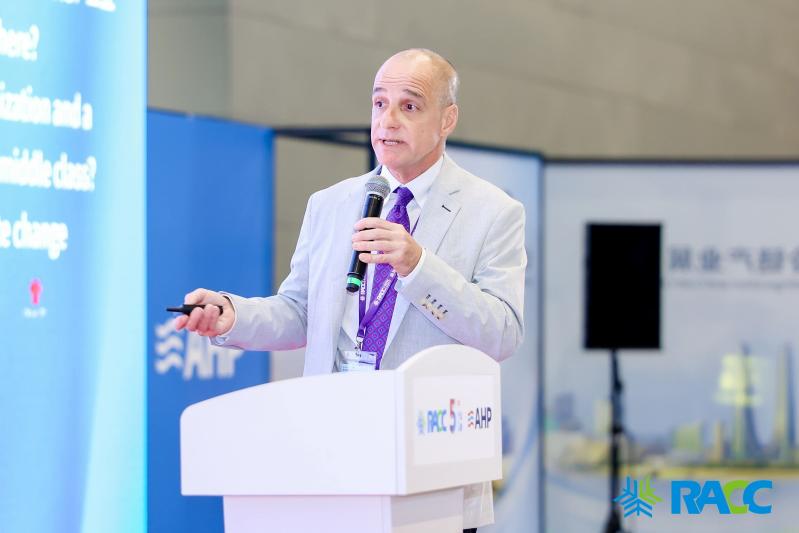
Max Jaramillo, Refri Americas Exhibition-President
Max Jaramillo, President of the Americas International HVAC&R Exhibition, indicated that the HVACR market in the Spanish-speaking Latin American region is currently showing steady growth, with the market size reaching $10.4 billion in 2023 and projected to maintain an average annual growth rate of 2.4%-6.2% in the coming years. Demand for energy-efficient products, especially inverter solutions, is particularly strong. He emphasized that the key to success in the Spanish-speaking Latin American market lies not only in product sales but also in building strategic partnerships with distributors and contractors. If companies can provide value beyond price competition—including professional training, technical support, and loyalty programs—they can achieve sustained success in this important and rapidly evolving market.
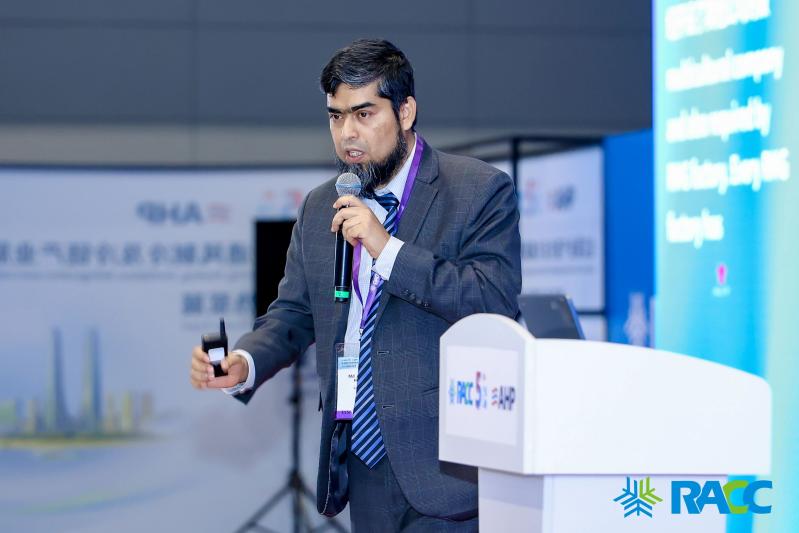
Engr. Md. Al-Emran Hossain, ASHRAE Bangladesh Chapter-President
Engr. Md. Al-Emran Hossain, President of the ASHRAE Bangladesh Chapter, stated that Bangladesh is becoming one of the fastest-growing HVACR markets in South Asia. Its air conditioner market size reached $121 million in 2024, and the overall HVAC market is projected to exceed $720 million by 2029, with an average annual growth rate of 7.46%. However, the market landscape is distinctly layered: Chinese brands like Gree and Midea dominate the mass market with price advantages; local brands like Walton hold a stable share of about 23%; while US and Japanese premium brands primarily focus on high-end projects. Notably, localization of production has become mainstream, with locally produced air conditioners accounting for over 80% of the market. Mr. Hossain emphasized that the next three years will be a critical window for companies to capture opportunities in Bangladesh's HVACR market. Establishing local technical training systems, developing authorized service centers, exploring local assembly, and actively leveraging government green infrastructure policies could enable sustainable positioning in this high-growth market.
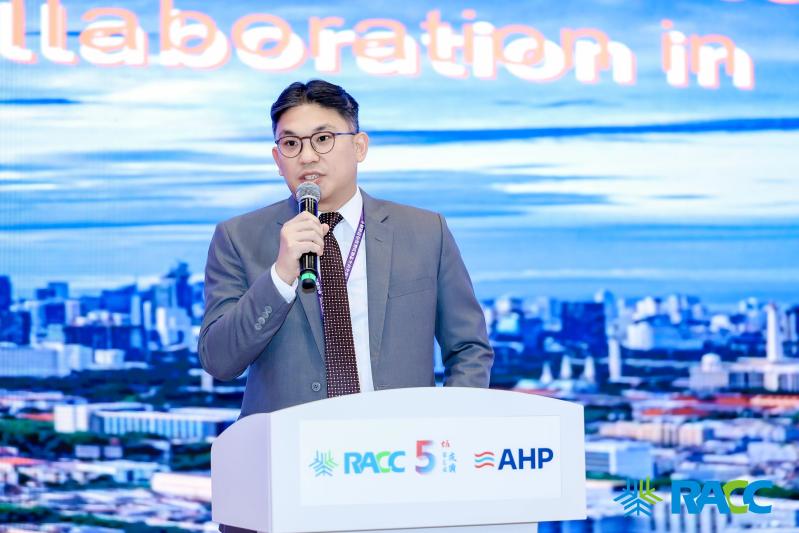
Ferdian Lo, ASHRAE Indonesia Chapter-President
Ferdian Lo, President of the ASHRAE Indonesia Chapter, stated that as Southeast Asia's largest economy (GDP over $1.4 trillion) and a tropical archipelago nation with a population exceeding 275 million, Indonesia is becoming an important growth pole for the global HVACR industry. Flagship government projects like the 3 million affordable housing units, free nutrition meals, and cold chain infrastructure are generating significant demand in areas such as green buildings, data center cooling, and cold chain logistics. Currently, the Indonesian chiller market is led by Daikin (32%) and Trane (21%), while local Indonesian manufacturing is gradually emerging.
The ASHRAE Indonesia Chapter has always been the core association partner and organizer of the Indonesia International Refrigeration & HVAC Exhibition (RHVAC Indonesia). This exhibition is the largest and only professional event in Indonesia dedicated to the HVAC, refrigeration technology, cleanroom, and energy efficiency sectors, committed to building a communication bridge between the Indonesian market and the global HVACR industry. In 2026, RHVAC Indonesia is expected to bring together 350 exhibitors and 20,000 professional buyers, providing more opportunities for Chinese companies to explore the Indonesian market.
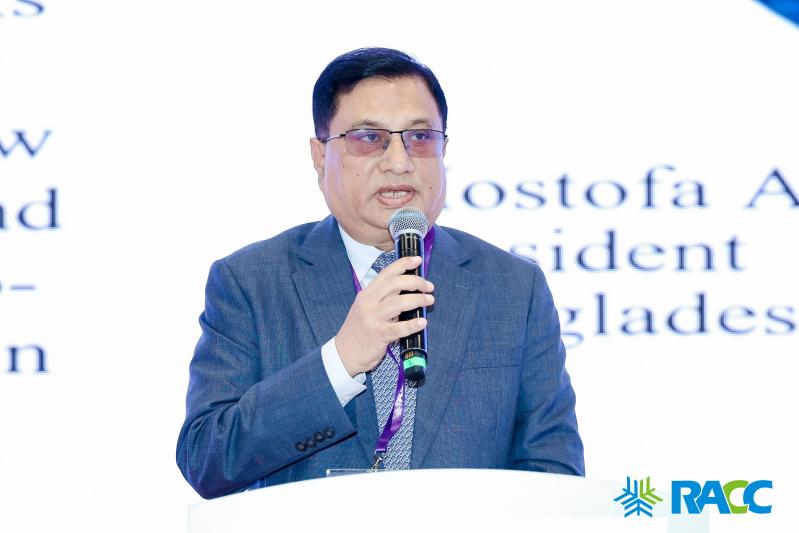
Mostofa Azad Chowdhury Babu, Bangladesh Cold Storage Association-President
As a country rich in food resources, Bangladesh urgently needs to establish a modern cold chain system to ensure stable year-round food supply. He pointed out that the current storage facilities are overly focused on potato storage, and the lack of advanced technologies like Controlled Atmosphere storage leads to post-harvest loss rates of 20%-40% for fruits and vegetables and other perishable agricultural products, making industrial upgrading imperative. Notably, the Bangladeshi cold storage industry relies heavily on Chinese technology and core components during its development. In this context, the China Refrigeration & Cold Chain Expo (RACC) provides an excellent platform for cooperation and exchange. Introducing financial support, IoT technology, and customized cold chain solutions will vigorously promote the strategic transformation of Bangladesh from single-crop storage to a multi-functional, sustainable modern cold chain system. This move can not only significantly reduce food loss but also comprehensively enhance the efficiency of the agricultural value chain, providing a new paradigm for food security in South Asia.
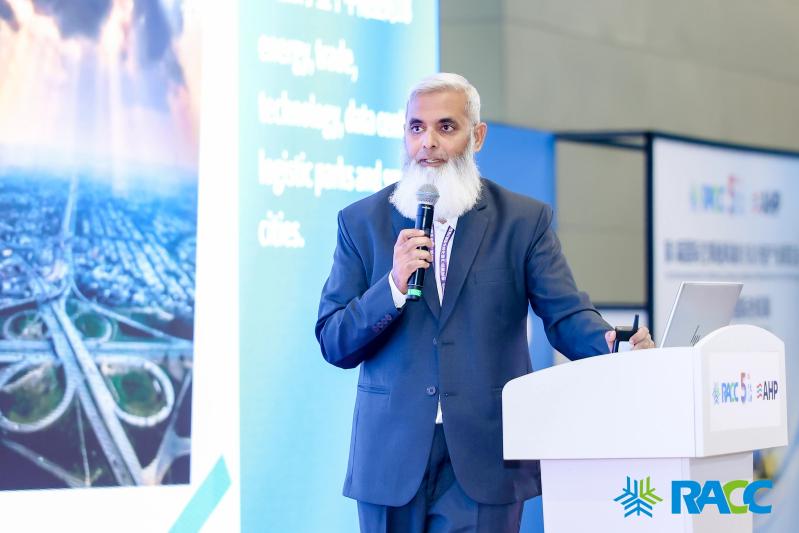
Syed Fakkhi Iftikhar, Pakistan HVACR Society-Chapter Chairman
Syed Fakkhi Iftikhar, Chapter President of the Pakistan HVACR Association, stated that Pakistan, as a strategic hub connecting South Asia, Central Asia, and the Middle East, and with its population exceeding 250 million and the development of the China-Pakistan Economic Corridor, is becoming one of Asia's fastest-growing HVAC markets. Currently, the HVAC equipment market continues to expand, with residential air conditioners accounting for 65%, chillers 19%, and Variable Refrigerant Flow systems, notable for their significant energy efficiency advantages, growing rapidly to a 23% share, with an annual market size already reaching $22–27 million. The market structure shows a dual pattern: Japanese brands dominate high-end projects, while Chinese products are rapidly penetrating the VRF sector with high cost-effectiveness and innovative technology. With ongoing urbanization, special economic zones, and data center construction, potential in segments like commercial air conditioning and cold chain logistics continues to be unleashed. The successfully held 31st Pakistan International Refrigeration & HVAC Exhibition has provided an efficient platform for Chinese companies to connect with over 20,000 professional buyers. Under the "Belt and Road" cooperation framework, China-Pakistan HVAC industry collaboration is facing a period of strategic opportunity.

Md Golam Sarour, Bangladesh Cold Storage Association-Director
Md Golam Sarour, Director of the Bangladesh Cold Storage Association, emphasized that accelerating the development of a modern cold storage system is of strategic importance for ensuring food security in Bangladesh, reducing post-harvest losses of agricultural products, and promoting sustainable trade in perishable goods. Facing multiple challenges including insufficient infrastructure, spare parts shortages, high energy costs, outdated technology, and a lack of specialized technical talent, Bangladesh is actively promoting international cooperation. The focus is on technology introduction, joint investment, policy alignment, facilitating scientific exchange, accelerating green innovation, promoting the upgrading of the cold chain and cold storage industry, and enhancing the efficiency of Bangladesh's cold chain logistics. This will lay a foundation for building a resilient food supply chain.
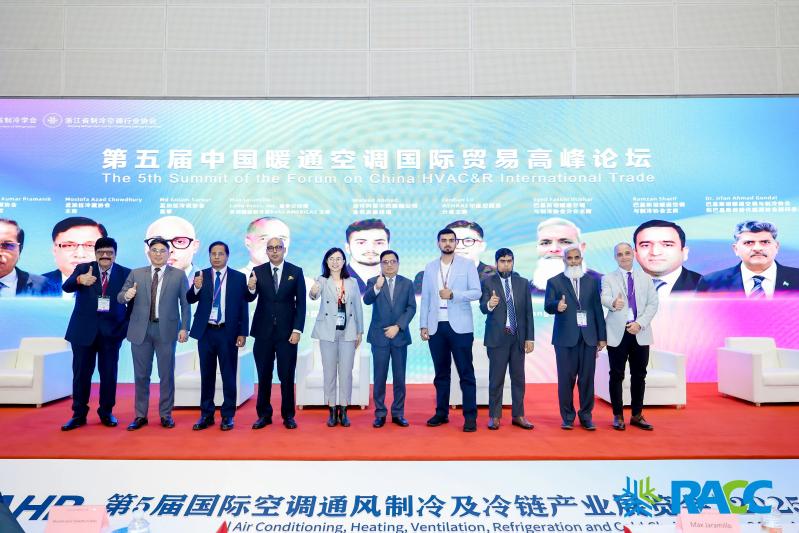
During the Q&A session, the guest speakers also addressed specific hot topics raised by the audience, helping companies better navigate overseas market expansion.























